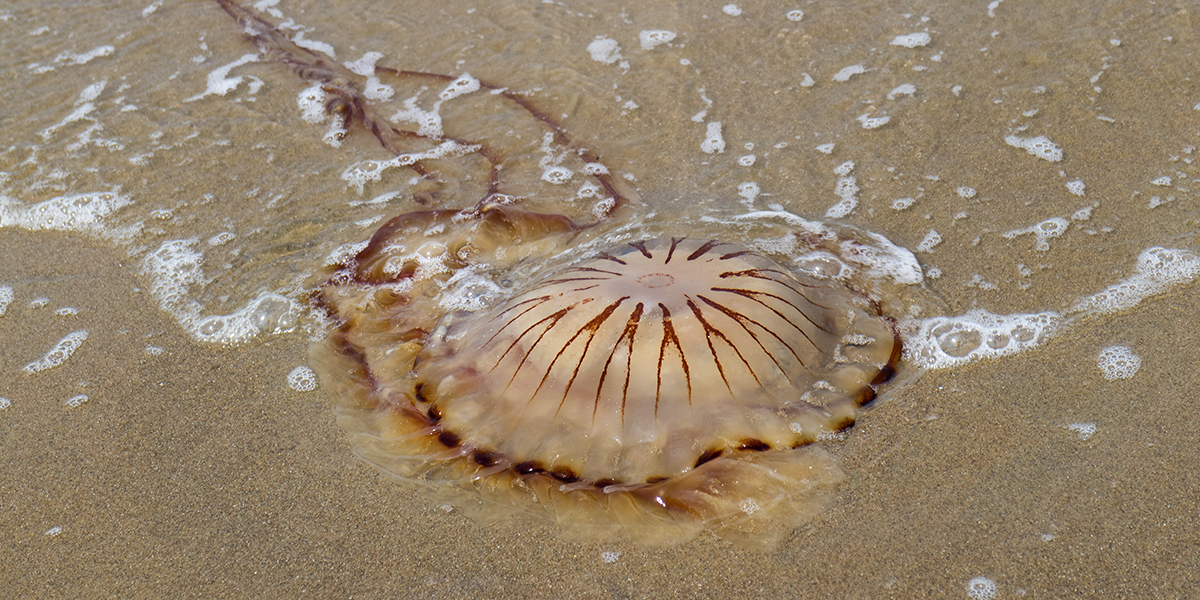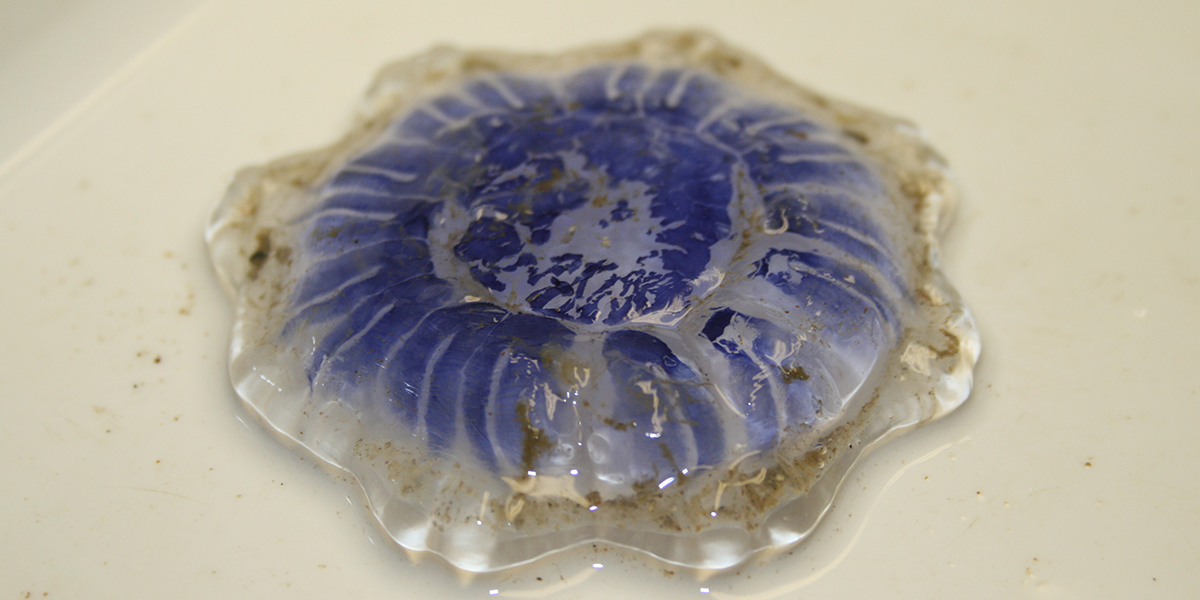Here are the polyps
For our previous paper, Where are the polyps? we investigated many types of substrates for the presence of jellyfish polyps; floats, jetties, shipwrecks, even a sunken submarine and oil rig. Turned out all belonged to several moon jellyfish populations. Where are the others?
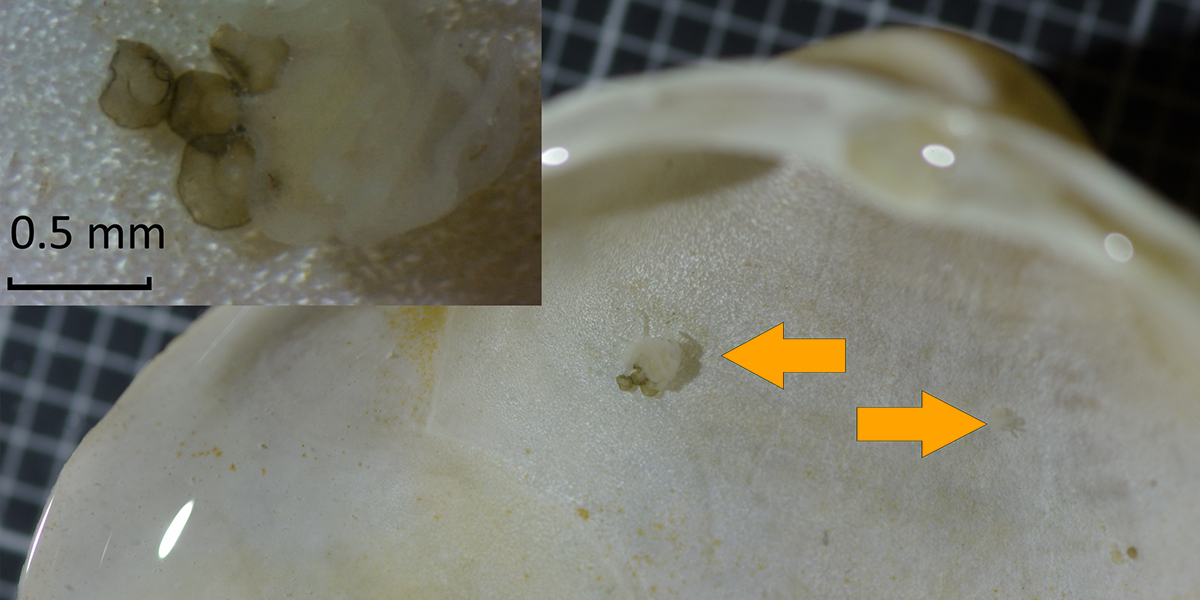
The jellyfish life cycle
Most people know jellyfish as bell-shaped medusae, but many species actually spend most of their life as tiny polyp or cysts on the seafloor. The medusae reproduce sexually, from fertilised egg a planula larvae hatches, which swims around looking for a surface to settle. When settled, the planula can develop in a polyp or a cyst (depending on species). Polyps look like tiny sea anemones which is not surprising considering they are close relatives. They feed on plankton and can reproduce asexually in various ways to produce daughter polyps or podocysts. Podocysts are 'survival stages', with a tough outer layer to survive poor conditions such as burial under sediment, low oxygen and no food. When conditions improve, a polyp emerges from the podocyst which can release tiny jellyfish into the water. Polyps and podocysts can produce many tiny jellyfish, and are the source of most jellyfish blooms. For many species, they have never been found in nature. To understand jellyfish life cycles and e.g. predict future blooms, knowing where the benthic stages live is important.
Finding polyps and podocysts
When fellow naturalist Marco Faasse had found weird small blobs on shells, we went out to sea again in search for polyps, this time using a different approach. We investigated shells and stones caught by this behemoth machine, the Deep Digging Dredge, which is used to study benthic fauna. On Dogger Bank in the North Sea we found first polyps inside shells, and also cysts! As you can not determine the species by the appearance, we had to sequence a part of their DNA to ID them. When we did this we found they belonged to Chrysaora hysoscella, the compass jellyfish! The polyps and podocysts are less than one mm in size so difficult to detect unless you really look for them.
Later, beachcombing during the EMBS symposium Oostende, I found jellyfish cysts inside shells. Exciting! Although it was difficult to get DNA from these shells, we managed to ID some of them as podocysts of compass jellyfish AND blue jellyfish Cyanea lamarckii! Shells that have been washed up on beaches are exposed to factors such as dehydration and UV radiation from sunlight which might explain why the success rate in getting DNA from cysts was low, so ideally, one would collect polyps and cysts from their original locations using scuba diving, trawling, dredging or coring.
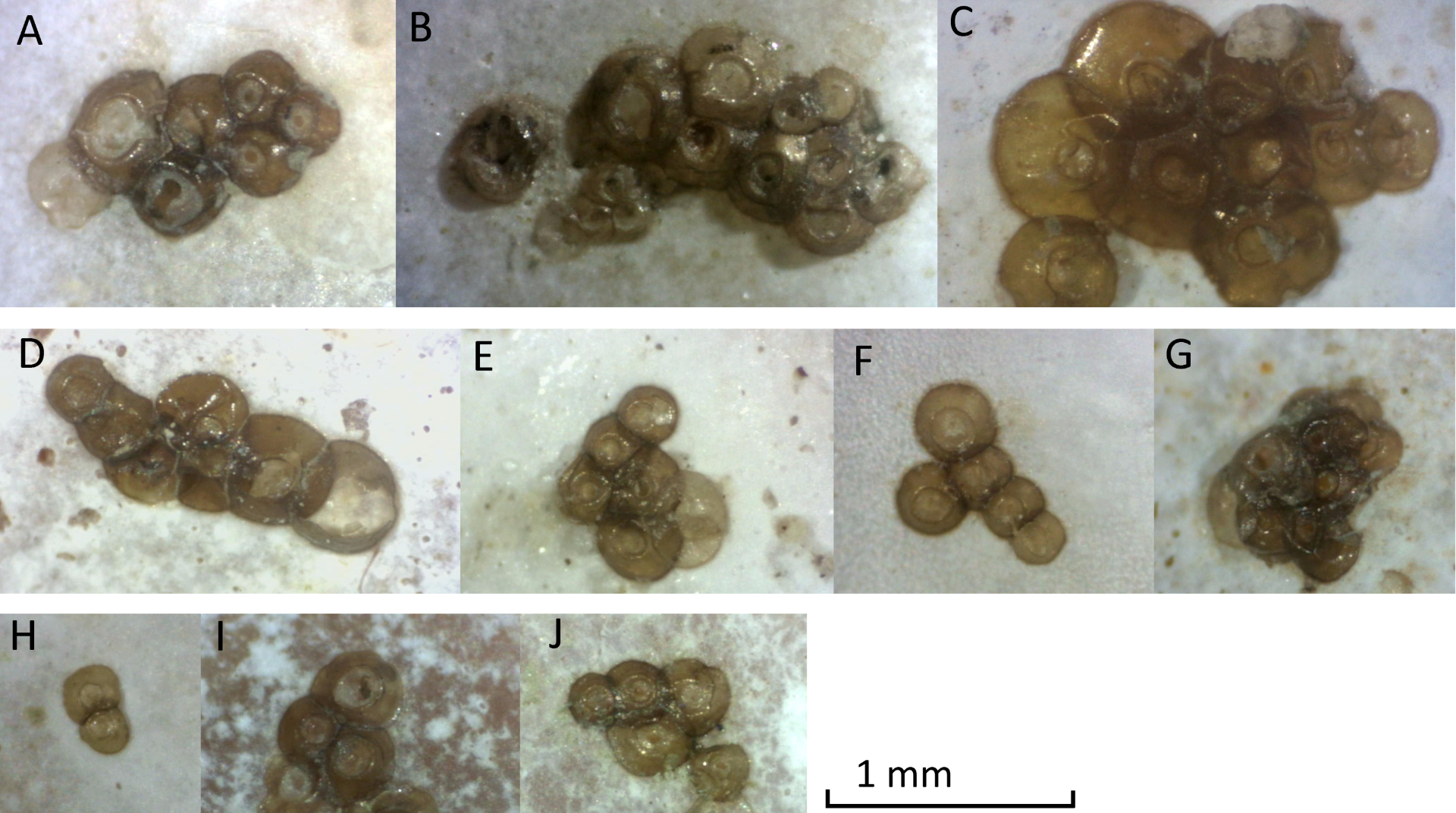
Important substrates
Bivalve shells appear to be important substrates for jellyfish, which is not surprising since jellyfish and bivalves have been sharing the ocean already for several hundred million years. I hope the paper 'Here are the polyps' will inspire others to go beachcombing and maybe discover cysts of other species of jellyfish as finding the missing benthic stages is sort of the 'holy grail' of jellyfish science. In the meantime we have found cysts on shells on other beaches as well.
Article
Van Walraven, L.; van Bleijswijk, J.; van der Veer, H.W. (2020). Here are the polyps: in situ observations of jellyfish polyps and podocysts on bivalve shells. PeerJ 8: e9260.
Part 3
The polyps and podocysts were found hiding inside empty bivalve shells
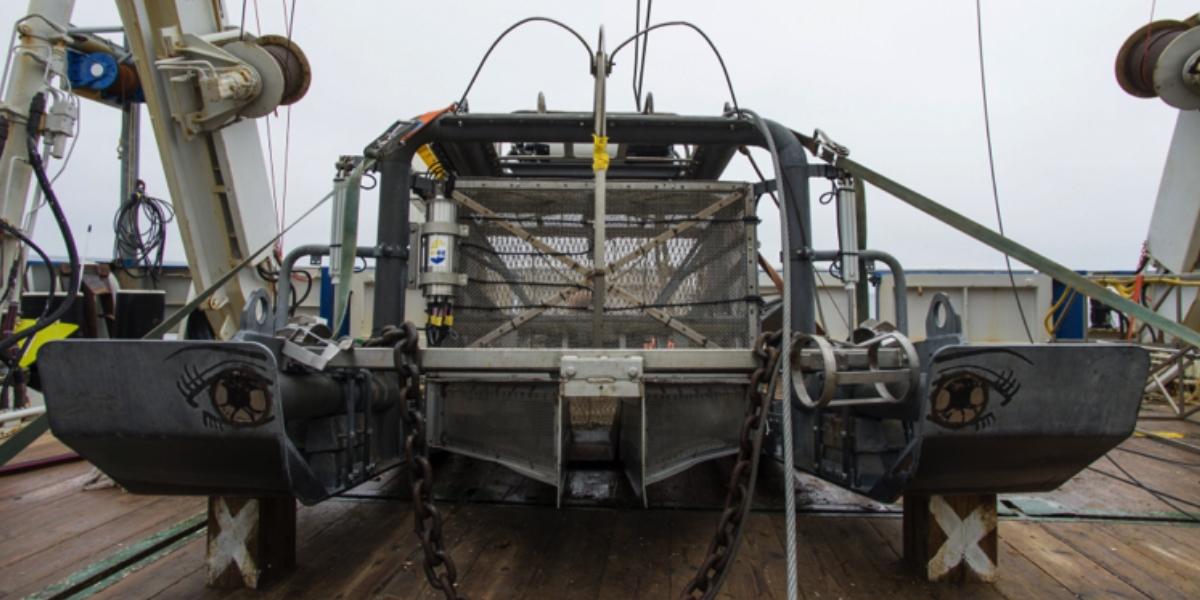
Generalised life cycle
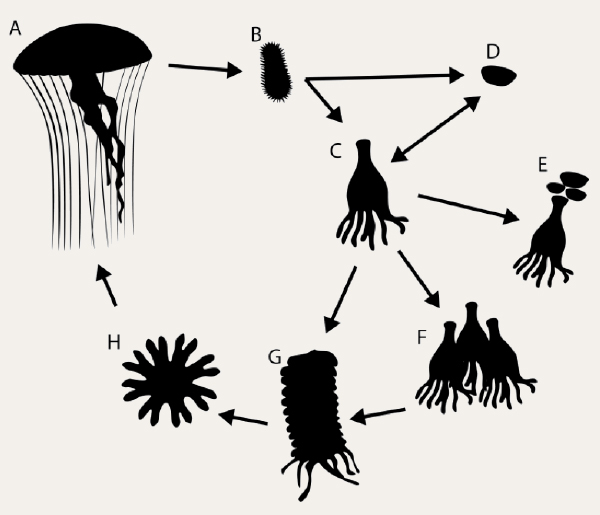
Figure: Adult medusae (A) reproduce sexually, producing planula larvae (B) which settle on a substrate and either develop into a scyphistomae (C) or directly into a podocyst (D). Scyphistomae can reproduce asexually by producing podocysts (E), producing scyphistomae (F) or forming strobila (G) which release ephyrae (H) in a process called strobilation. Ephyrae develop into adult medusae.
Polyps belonging to:
